Correct attachment of the scythe to the snath
In order to enjoy mowing with a scythe, we need three basic things: 1. A well-peened, sharp scythe, 2. A snath correctly adjusted to the mower's physique, and 3. Adherence to three principles when placing the scythe on the snath, which are related to angles. These angles can be called Hafting Angle, Lay, and Horizontal Balance. Their basic settings were determined during the manufacture of the scythe, primarily by the position of the tang relative to the blade. Let's take a closer look at these angles.
Hafting Angle
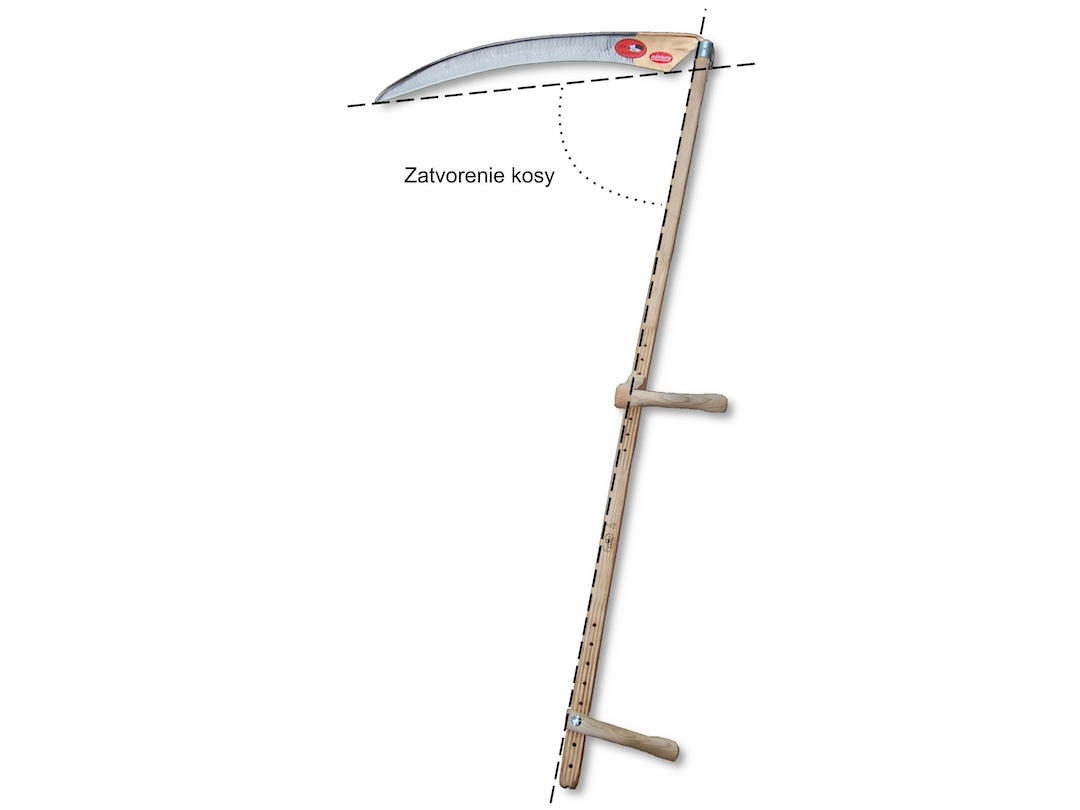
The Hafting Angle is the angle formed by the line connecting the tip and heel of the scythe and the line running along the tang. The snath itself is an extension of this angle. This angle determines how wide a strip of grass we will mow with one stroke of the scythe, and thus the amount of effort we will have to exert.
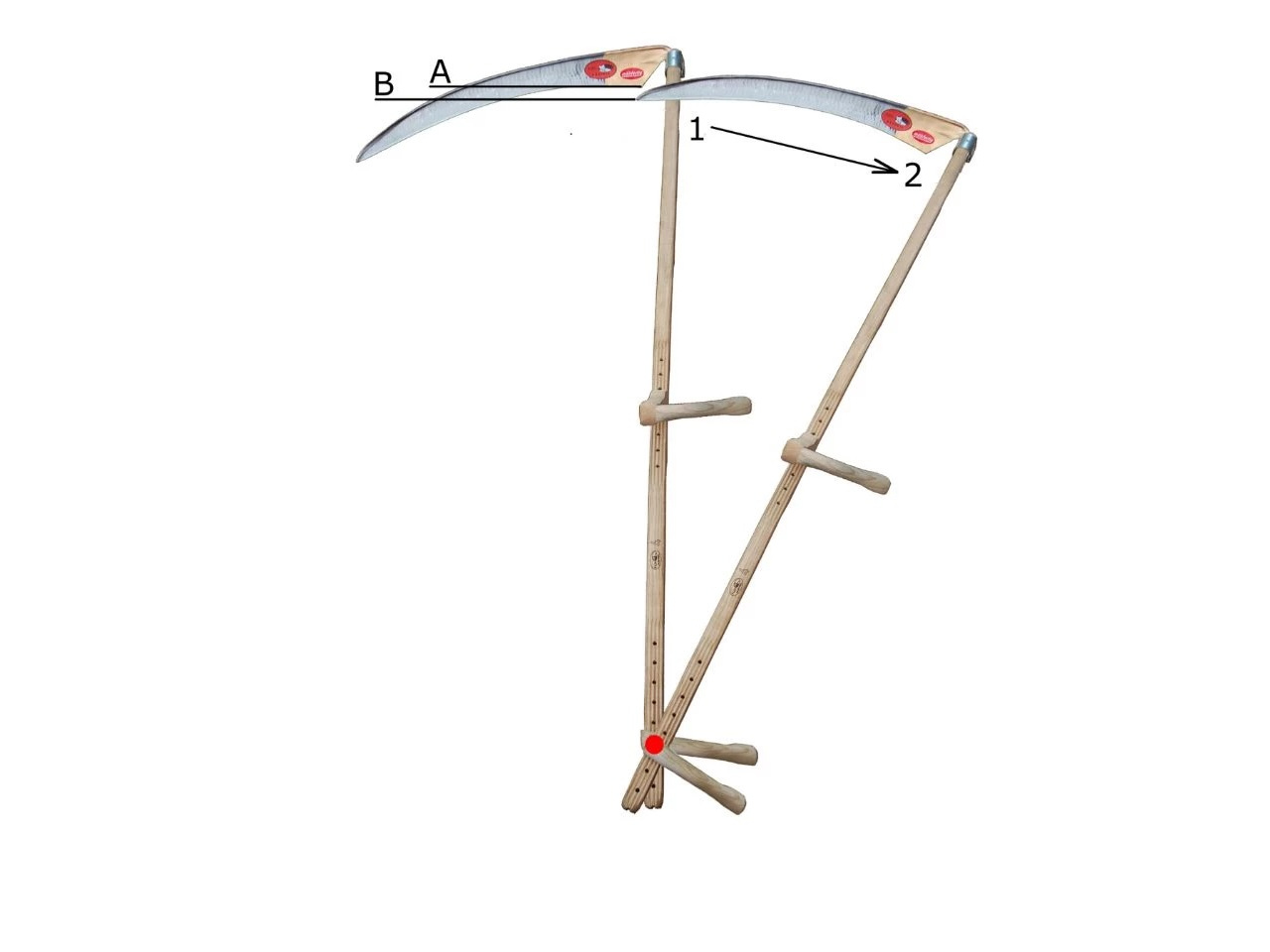
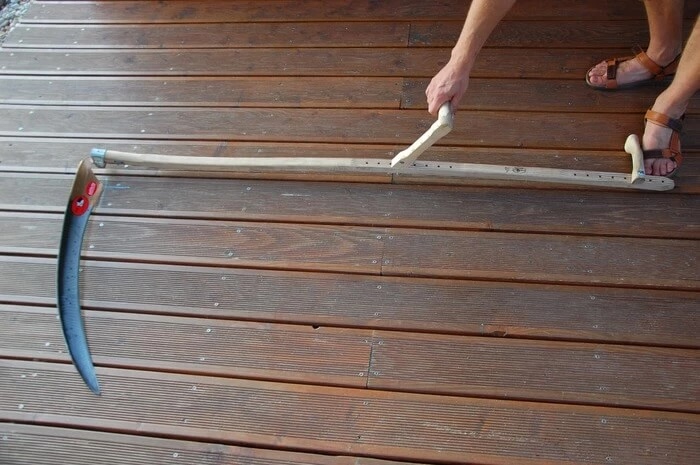
In practice, place the scythe on the ground and mark the position of the heel of the scythe with chalk or place a stone or piece of wood under it. Then rest the upper handle against your shin and move the entire scythe to the right so that the tip of the scythe is above your mark. You can measure the distance with a tape measure, but in field conditions, your fingers will suffice.
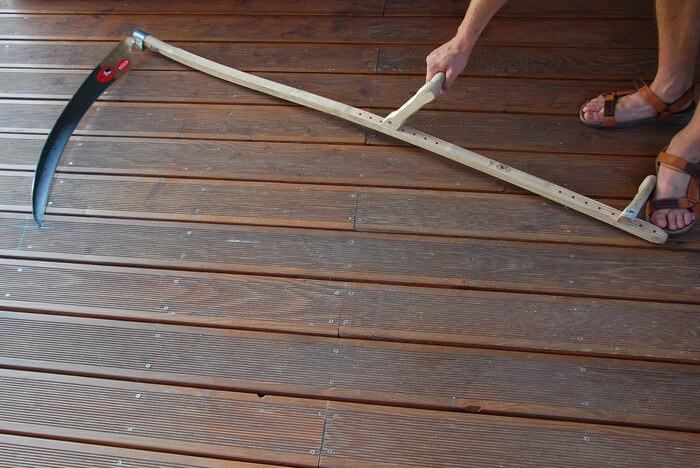
Measure the distance with a tape measure; in the field, your fingers will suffice. A scythe up to 60 cm should not be hafted more than 1 finger's width. Up to 80 cm, no more than 2-3 fingers' width, and longer scythes no more than the width of your palm.
Lay
The lay is the angle between the blade (cutting edge) and the ground. If the scythe and snath are correctly adjusted, the distance between the ground and the cutting edge should be approximately 0.5-1 cm. With this "lift," the scythe blade strikes the grass stems at an ideal angle and cuts them beautifully.
In some cases, such as when mowing tall, dense grass or in terrain where small stones may be hidden, it is not a problem to lay the scythe higher (up to 2 cm above the ground). Under no circumstances should you lay the scythe lower. You may cut into the ground while mowing, which will dull the scythe unnecessarily or damage the blade.
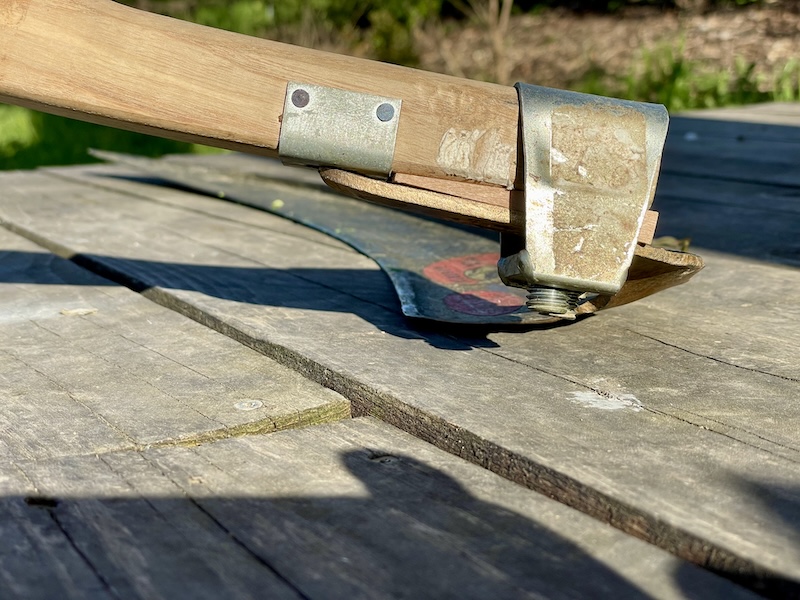
The scythe is too close to the ground, which increases the risk of snagging on the ground and damaging the blade.
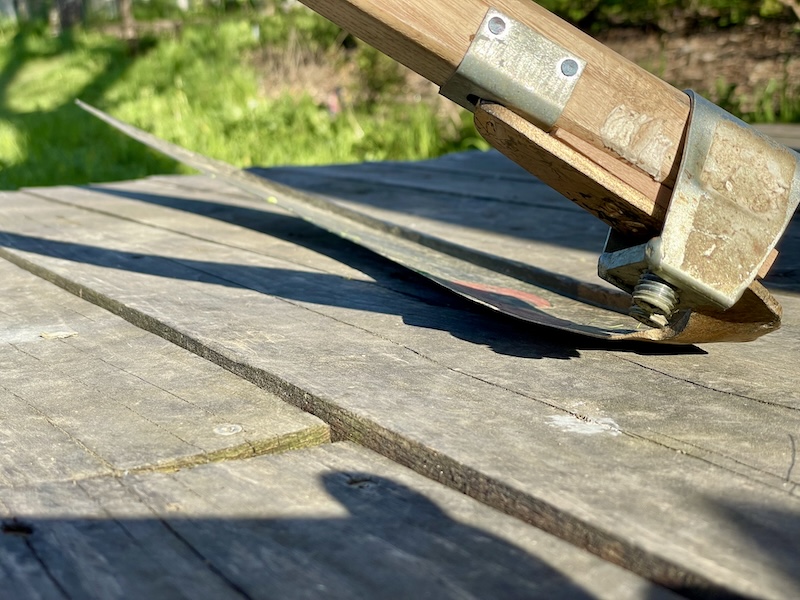
The scythe is set too high; this position is suitable for harder herbs, but with softer grass it reduces the effectiveness of mowing.
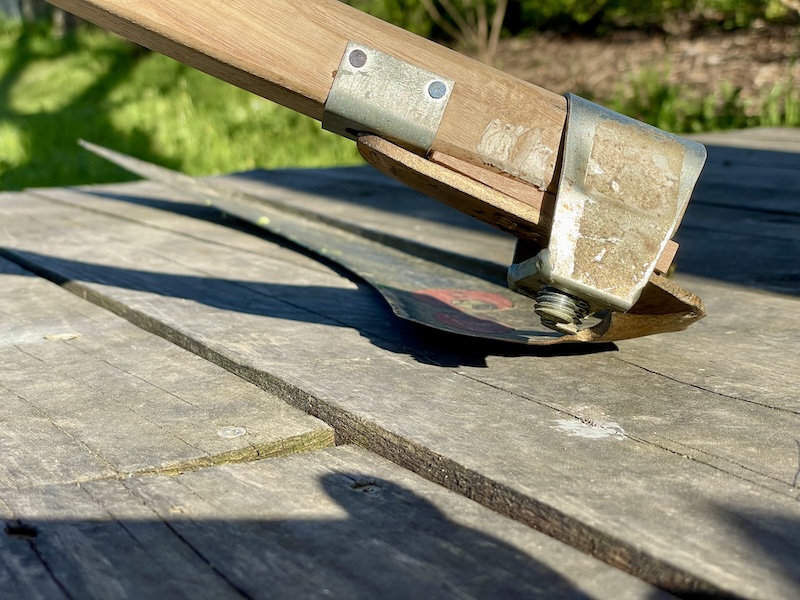
The scythe is in the ideal position for maximum cutting efficiency with a safe distance between the blade and the ground.
Incorrect laying can be corrected using a wooden wedge (as shown in the picture) or by adjusting the snath. In the latter case, the old rule applies: think twice, cut once.
Horizontal Balance
The final step in achieving harmony between the scythe, snath and scyther is to adjust the horizontal balance of the scythe. A well-balanced scythe means that it is attached to the snath in a way that is comfortable for the user. This means that when you hold the snath or scythe comfortably in your hands, the blade of the scythe should be parallel to the ground without having to correct it with your hands or wrists. In other words, the scythe should fit naturally into your hands in the optimal position.
